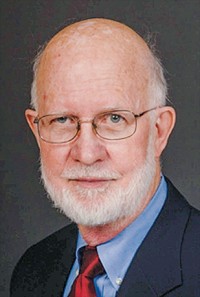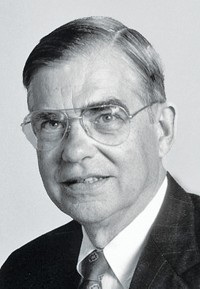Advertisement
Grab your lab coat. Let's get started
Welcome!
Welcome!
Create an account below to get 6 C&EN articles per month, receive newsletters and more - all free.
It seems this is your first time logging in online. Please enter the following information to continue.
As an ACS member you automatically get access to this site. All we need is few more details to create your reading experience.
Not you? Sign in with a different account.
Not you? Sign in with a different account.
ERROR 1
ERROR 1
ERROR 2
ERROR 2
ERROR 2
ERROR 2
ERROR 2
Password and Confirm password must match.
If you have an ACS member number, please enter it here so we can link this account to your membership. (optional)
ERROR 2
ACS values your privacy. By submitting your information, you are gaining access to C&EN and subscribing to our weekly newsletter. We use the information you provide to make your reading experience better, and we will never sell your data to third party members.
ACS News
Nicholas Turro
Obituary: Esteemed chemist and Columbia University professor forged new paths in photochemistry
by Susan J. Ainsworth
November 27, 2012
Nicholas J. Turro, a world leader in the field of organic photochemistry and the William P. Schweitzer Professor of Chemistry at Columbia University, died of pancreatic cancer on Nov. 24. He was 74.
Turro “made deep and lasting contributions to the understanding of reaction pathways of highly energetic molecules,” says Harry B. Gray, a professor of chemistry at California Institute of Technology, who counted Turro as a close friend for nearly 50 years.
He was “a truly spectacular teacher-scholar who made everyone he worked with better,” Gray says. “A scientist who loved people, Nick devoted enormous amounts of time and energy to training students of all ages.”
Turro earned a B.A. degree in chemistry at Wesleyan University in Middletown, Conn., in 1960, and a Ph.D. degree in organic photochemistry at Caltech, under George S. Hammond, in 1963. He spent the following year at Harvard University working as a National Science Foundation postdoctoral fellow with Paul D. Bartlett.
Turro then joined Columbia’s chemistry faculty as an instructor, becoming professor in 1969 and Schweitzer professor in 1981. He became professor of chemical engineering in 1997 and professor of environmental engineering and materials science the following year.
In addition to chairing Columbia’s chemistry department from 1981 to 1983, he cochaired the chemical engineering department with George W. Flynn from 1997 to 2000.
Throughout his career, Turro was recognized for laying the foundations for modern organic photochemistry, supramolecular photochemistry, and spin chemistry through his pioneering research.
Turro “was one of the first organic chemists to employ time-resolved laser spectroscopic methods to generate and characterize short-lived organic intermediates, such as carbenes and radical pairs,” Gray notes. In the late 1970s, he discovered that photolysis of ketones in micelles could be used to separate magnetic from nonmagnetic isotopes, he adds. In work that employed “the full power of physical organic chemistry,” Turro also conducted “groundbreaking experiments” on the photoreactions of molecules adsorbed on porous silica and zeolites, Gray says.
Credited with more than 900 research papers, he authored several influential books, including “Molecular Photochemistry.”
Turro received numerous accolades, including the inaugural George S. Hammond Award from the Inter-American Photochemical Society earlier this year. The American Chemical Society honored him with many awards, including the Arthur C. Cope Award in 2011, the Willard Gibbs Medal of the ACS Chicago Section in 2000, and the Award in Colloid & Surface Chemistry in 1999.
In recognition of his excellence in teaching, Turro received the NSF Director’s Award for Distinguished Teaching Scholars in 2002 and ACS’s George C. Pimentel Award in Chemical Education in 2004.
He was elected as a member of both the National Academy of Sciences and the American Academy of Arts & Sciences in 1981 and became a member of ACS in 1960.
A funeral mass will be held at Mt. Carmel Roman Catholic Church, in Tenafly, N.J., at 10 AM on Nov. 28.
Turro is survived by his wife of 52 years, Sandra; daughters, Cynthia Harty and Claire Styrbicki; and five grandchildren.





Join the conversation
Contact the reporter
Submit a Letter to the Editor for publication
Engage with us on Twitter